
CONTENIDO
Characteristics
Programming language:
Initial release:
Open Source as of:
License:
Current major release:
Registered users:
Available languages:
Since 2000 CONTENIDO has been active in the market of open source content management systems. The system serves as a backbone for internet, extranet and intranet solutions, mobile web sites, content syndication and as a general content provider for third-party systems. This CMS serves numerous well-known companies in the German-speaking market.
Contenido integrates well in existing infrastructural environments. The maintenance section of the CMS allows even users without any technical skills to add, maintain and publish content for many kind of online services. The extensive roles and rights management offers a broad variety implementing and granting a fine granularity of permissions. The CMS is of great help in content creation and administration processes for multilingual websites.
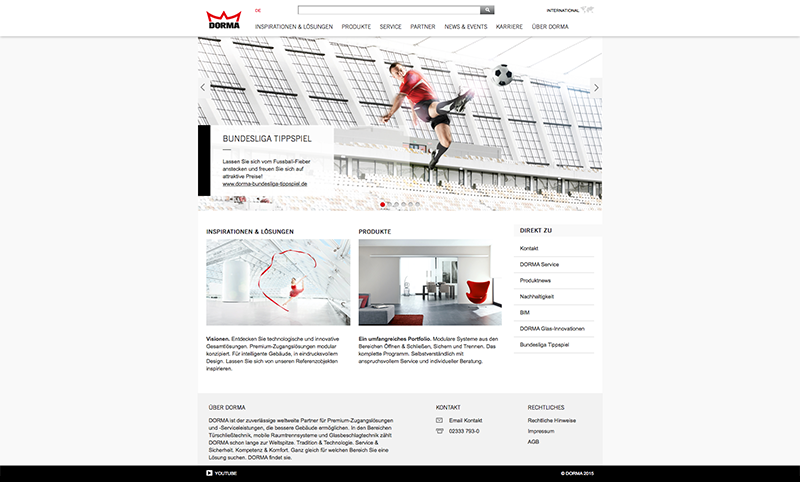
The Contenido Principle
The multi-client capability provides the option to host several online services with a single installation, which lets each client maintain their services separately. Each client can host any number of language versions facilitating content synchronisation for translation and publishing purposes.
The system segregates content and style and stores these objects separately. This fact offers the opportunity delivering the maintained content via various channels like web sites, mobile devices or SOAP interfaces utilising different formats as HTML, PDF or XML.
Layouts define the look and feel of online services. These layouts compose not only the HTML-skeleton but propose module containers as well. These containers load dynamic module components like navigation, editorial data, e. g. text and pictures, search functionalities and many more.
The content management system presents added module content via the own template engine but can also utilise external template engines, like Smarty templates, as well. Various content types complete the module section. Content types implement tiny widgets for frequently used functionalities. Contenido allocates these content types, like page or download-lists, via an configuration option (input dialog).
The system combines layouts and module generating templates. Templates serve as scaffolding for adding and maintaining page content via a WYSIWYG-editor. A preview displays the maintained content, as it would be seen within the online service. Time-controlled publication allows setting pages on- and offline based on defined dates. Contenido offers the editor various SEO tools, generating XML-sitemaps, meta tags and page titles in an automatic process or via manual intervention.
Contenido offers the ability to increase user feedback by adding a comment and rating option to specific pages – effectively integrating users‘ own blogs. A bulletin board module enhances online services with real user generated content.
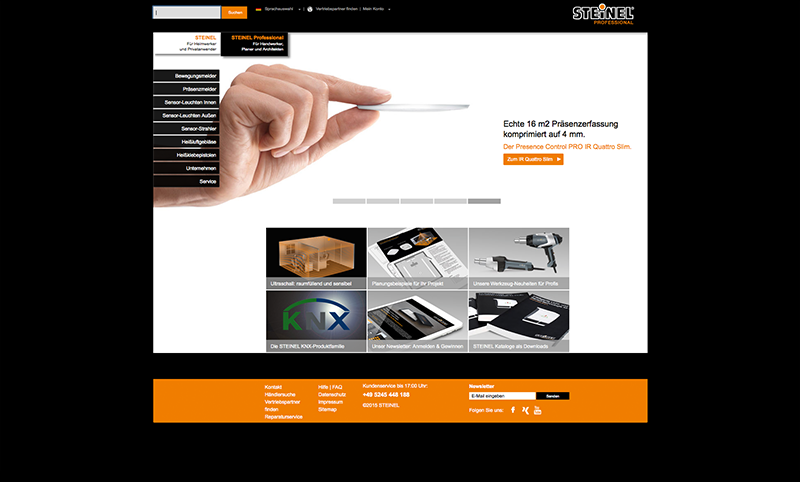
Dynamic extensions with plugins
CMS plugins expand the system with additional components and dynamic extensions, which can be used in both the back-end and the front-end. In order to control the extensions in the system dynamically, Contenido provides a plugin manager which helps to install new plugins directly in the back-end. The systems standard installation brings various plugins within.
The standard offers already three different plugins for the management of URLs, including friendly URLs via the customizable ModRewrite plugin. A URL shortener works for each page within the system. The plugin supports SEO optimisation for marketing campaigns with keyword-driven friendly URLs. The bundled plugin link checker helps to verify existing internal and external links. It checks all existing links within the online service and advises the editor about inaccessible or broken links.
The workflow manager plugins governs the content maintenance and publishing process. It allows defining an individual sequence of concatenated steps and granting permissions to users and groups for each step. Reminder and escalation management completes the workflow definition.
The newsletter module integrates newsletter application processes into online services by providing opt-in and opt-out functionality including an extensive user management. The form manager enables building forms in short time. Content checks on input fields can be performed with regular expression and mail content may be enriched with form variables. The system saves user generated content to its database and offers several export options.
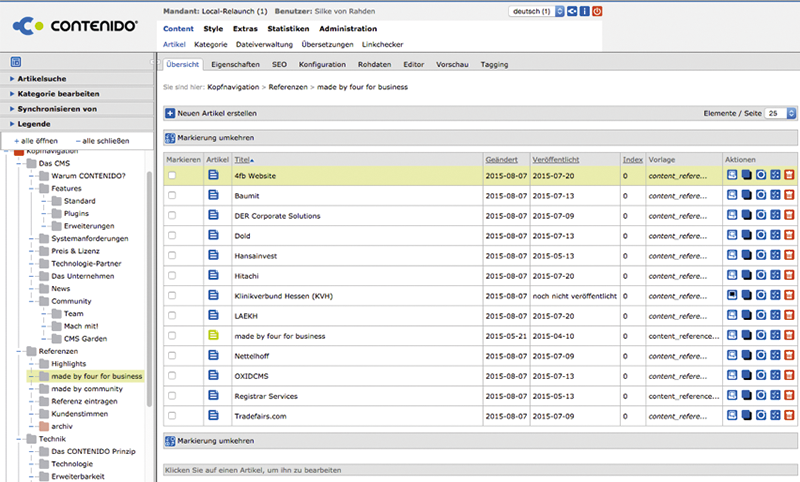
Oxid eShop software and Contenido are pairing perfectly via the OXID2CON Portal plugin. The same applies for Shopware (cms4shop). Both systems implement the interface via SOAP. The portal increases the attraction to an online shop by adding extensive modules and elements for the integration and presentation of content. The interface delivers valuable content to enrich a shop with extended product information, teasers, picture galleries and blogs creating an exciting online shopping experience.
The new plugin GRIDSTARS allows the editor in the back-end to create and edit different page types dynamically and place them into the page using the Drag & Drop method. The menu allows to integrate various content elements into the page and check them with a WYSISWYG editor.
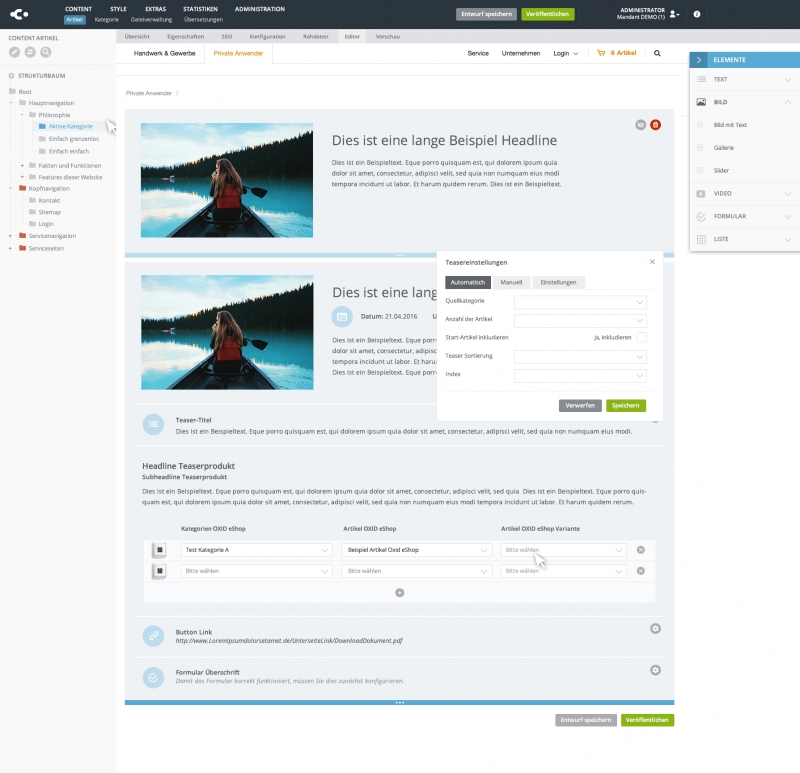
Target audience
Contenido claims to be most suitable for large-scale multilingual projects intending to integrate several external functions and apps, supplying editors with a hassle-free system with low support demands. Editors need no technical skills to work with this CMS.
Technology
The system utilizes open source software products like MySQL database or the Apache web server. Open and well-known standards like PHP (at least 5.2 required) and HTML are in favor over proprietary components like a dedicated scripting language. The modular structure allows enhancing Contenido easily with a broad range of additional functionalities like binding the user management to an existing directory, e. g. OpenLDAP or Microsoft's Active Directory. The internal ‘Generic DB’ implements the interface for the database level and allows utilising several database management systems. ‘cAPI’, the native business objects framework, enhances the system with additional options customising the system.
The current version 4.9 emphasizes the collaborative development approach. Now the system stores layouts and modules (formerly persisted in the database layer) at the file system layer capitalising version control to manage and deploy them in a controlled procedure. Continuous integration becomes more important and the system integrates well.
During the installation process the system checks all requirements and displays them in an easy understandable overview.
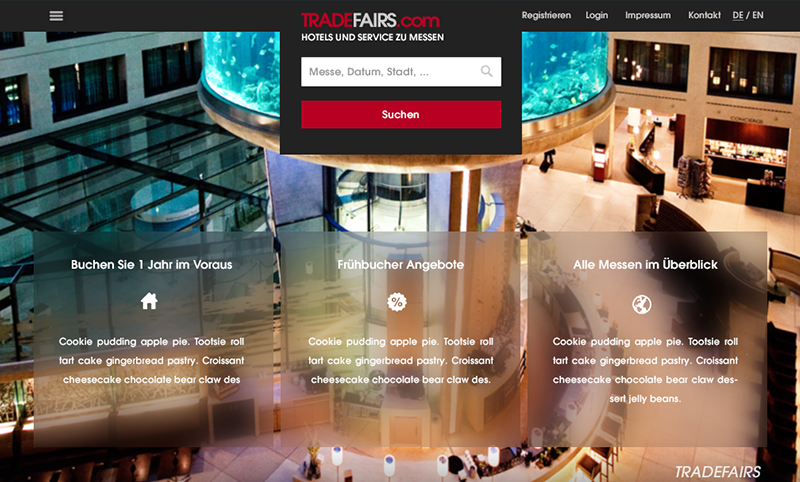
Most recent version
The most important feature of Contenido 4.9.x is the content versioning: All changes in an article will be stored automatically. The changes can be restored by date or an incremental number. Contenido offers two types of content versioning, „simple“ and „advanced“ mode: In simple mode all changes of an article will be published immediately. In advanced mode all changes will be saved as a draft and must be explicitely published afterwards.
Benefits and concerns
The system is mainly spread in the German-speaking world but lacks international recognition. This fact results in a relatively small, but straightforward community of highly motivated developers who are responsible for the further development of Contenido. Due to this fact the release cycle is only vaguely predictable.
The installation effort is relatively high because of the complexity of the system and is therefore only reasonable for larger web projects.
However, the concerns are mitigated by the fact that the configuration requires no development skills and the implementation of layouts, modules and plugins require no further programming languages beside HTML and PHP. This allows for rapid response to new requirements, web strategies or digital trends.
The system promises easy implementation of individual adjustments and seamless connectivity to complex enterprise IT systems. There are no language integration restrictions, the multisite management offers cross-content functionality and a comprehensive right management supports the easy-to-learn usage.

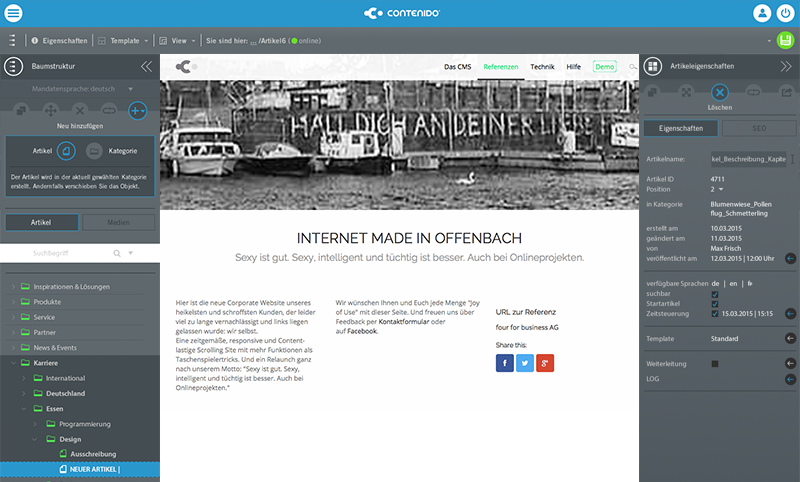
Roadmap
The new version 4.9 succeeded the long running and successful version 4.8. Beside maintaining and enhancing the current version 4.9, the concept evolves for the “next generation”, compromising essentially following conceptual innovations:
- a completey re-designed administration section
- direct editing (moving the classic backend to the background and focussing on the editor‘s tasks)
- grid-based templates
- a new approach to media asset management (database)
A release plan is in progress which serves as a general direction for future releases. Migrating to Git versioning fosters a collaborative process which enables external developers to provide and integrate their code more quickly. The community always welcomes interested developers and users.
